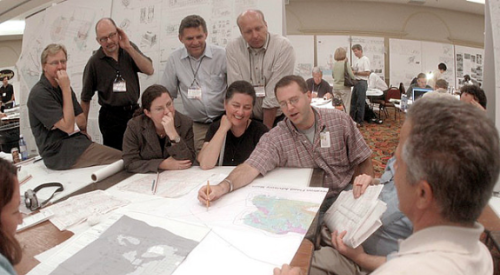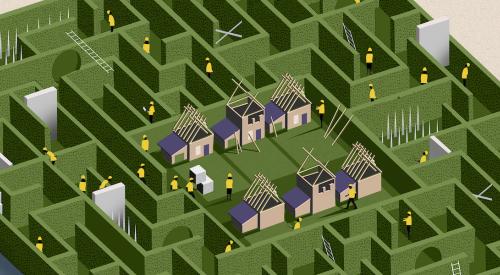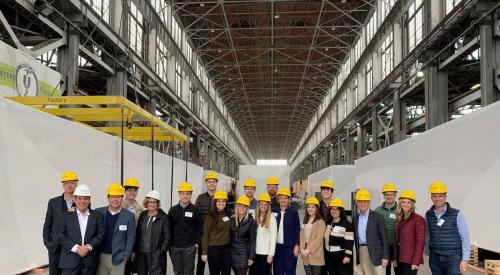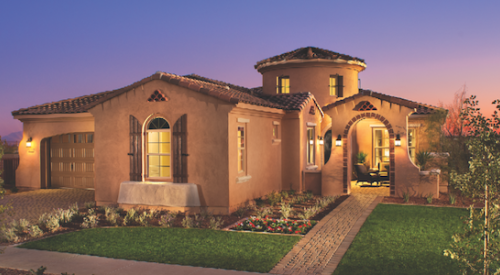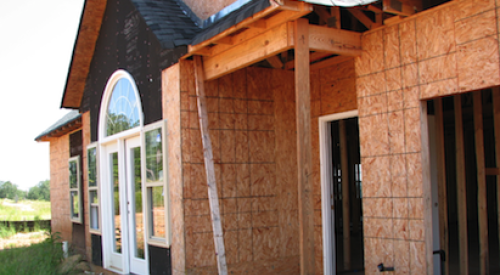|
Compared with people in the rest of the world, Americans are among the best housed. Still, a startling number of Americans do not have decent, affordable housing. According to the 1999 American Housing Survey, 15.5 million American households, or 15%, had severe housing problems, meaning they spent more than 50% of their income on housing and utilities or they lived in substandard housing.
Certainly not the lone crusader for affordable housing, Michael Pyatok is nonetheless on the front lines of the fight. Pyatok Architects Inc., with offices in Oakland, Calif., and Seattle, has been designing affordable housing developments since 1985. What’s significant about Pyatok’s work, however, is not that he designs affordable housing but how. Pyatok, the winner of more than 50 design awards, is widely recognized for bringing beauty and cultural relevance to affordable housing, and for using a participatory design process that encourages the involvement of future residents and neighbors. Pyatok contends that the greater product of the process is not the housing created but the community organizing that takes place.
“We structure it so that it is an engaging process. We solicit from residents their opinions on how they want to live, what they think about their community, and from the neighbors, how they want these new introductions into the community to fit,” says Pyatok.
Groups of as many as 50 participants work in smaller teams that meet weekly or semimonthly for a few hours at a time. Each team is given fairly simple modeling kits to address the task at hand — neighborhood plans, site plans, household needs, financial analysis or architectural goals. Each team presents its ideas to the larger group for the decision-making process.
This fosters not only pride and a sense of ownership in the immediate product, but also encourages active participation in the rest of the process — lobbying public officials, securing funds and loans, and continuing to address other needs of the community.
“The development of housing is really a piece of a much larger community organizing strategy,” Pyatok says. “They’re trying to pull themselves up by their bootstraps in many arenas: They’re trying to get jobs, to get job training, to improve their schools, to get rid of drug dealers in the neighborhood. We’re helping strengthen their political will and clout, their wherewithal, knowledge and confidence in how the system works.”
Pyatok identifies eight groups of players who are essential in developing successful affordable housing. The first four set the conditions:
- elected politicians
- strong housing advocates
- planning commissioners
- lenders
Once the conditions are in place, these implementers make it happen:
- sponsors -- private developers, nonprofit groups
- administrative agencies
- architects
- contractors
All the players must be highly imaginative, passionate, skillful and experienced, Pyatok says. “If they’re not experienced in doing this kind of thing, they should be apprenticing.” Overcoming contractors’ notions of what people needing affordable housing should have, however, can be an issue when it comes to job estimating, but Pyatok points out that contractors are critical to the process because they ensure a quality outcome. And the passion is contagious. “Contractors get on board and pass it along. They really want to roll up their sleeves and be a part of the process.”
| “The development of housing is really a piece of a much larger community organizing strategy.” |
Pyatok says a key part of developing affordable housing is designing for beauty and cultural relevance. For example, Klahanie in Issaquah, Wash., is a low-income townhome project designed with its Southeast Asian immigrant residents in mind. Swing bedrooms allow some units to “borrow” rooms from others to accommodate extended families, and the community gardens, colors and even pegs on porch columns for hanging vegetables and herbs came out of the participatory process. Another project, James Lee Court in Oakland, features public art from the various ethnic groups in residence. Bay Bridge in Oakland, which is Housing and Urban Development housing for people with AIDS, features a communal courtyard divided into intimate areas with trellised gateways. Trellises planted with flowering vines and bright red birdhouses create a living wall on the building’s façade.
“The designs of these places send messages to the residents, the people who live around them and future generations about how much we cared about the people that were being housed there and about how much we cared about the neighborhoods,” Pyatok says. “Good design is a sign of respect.”
Pyatok says he learns as much as he teaches when he works with residents in the participatory design process. Having grown up in a single-parent, welfare household in Brooklyn, N.Y., he considers his continuing real-life education as important as his degrees from Harvard and the Pratt Institute.
“This whole movement — I’m just a part of a larger set of ideas — is trying to move history forward,” he says. “Those who really believe in participation in planning and development are overcoming the shortcomings of how housing used to occur by a handful of professionals working for those who had capital conspiring with the belief that they knew what was best for everyone else. We’re all engaged in this effort to change that process.”
